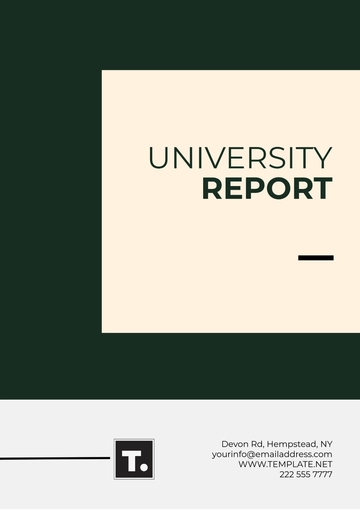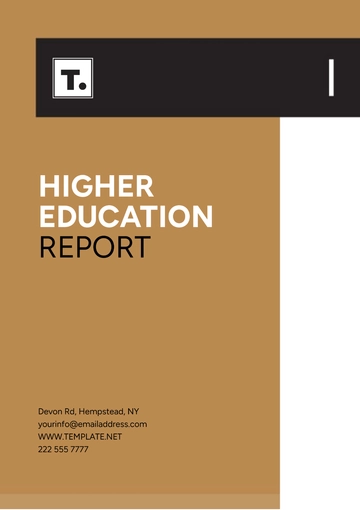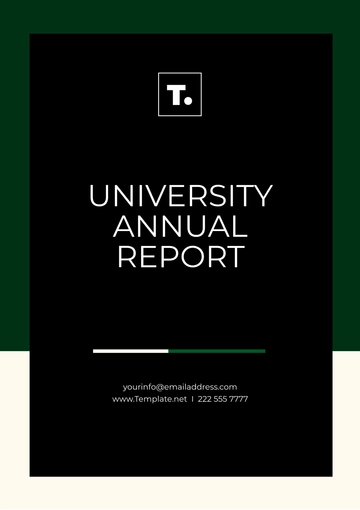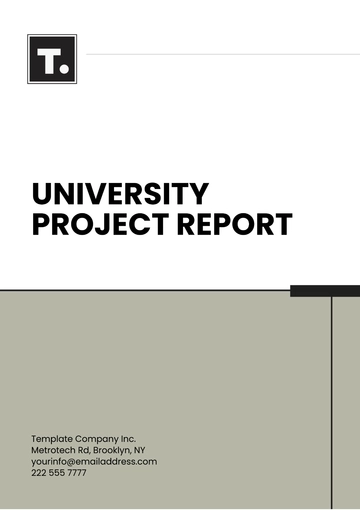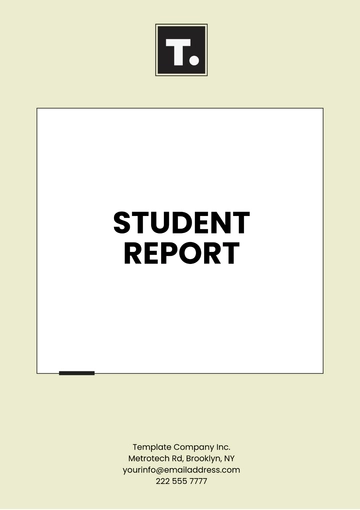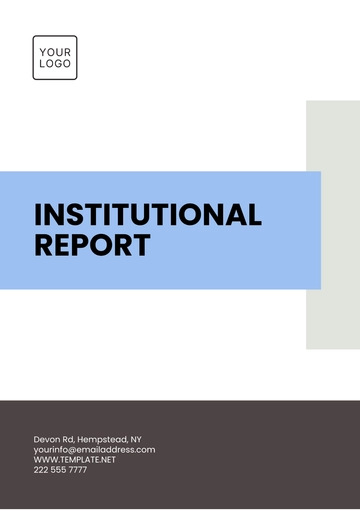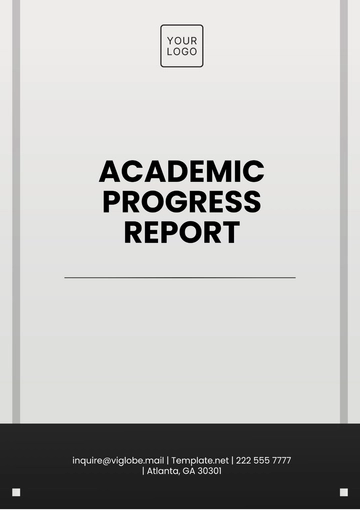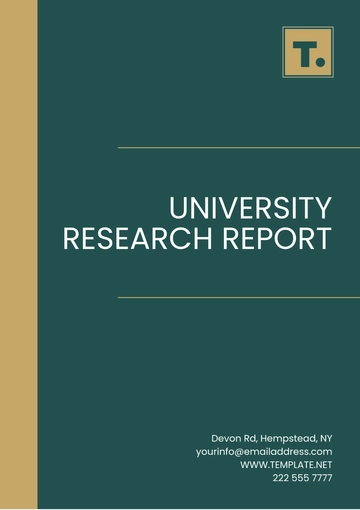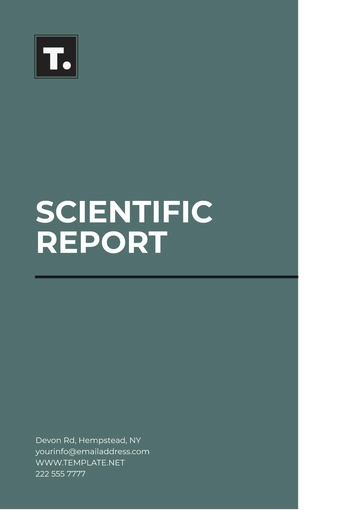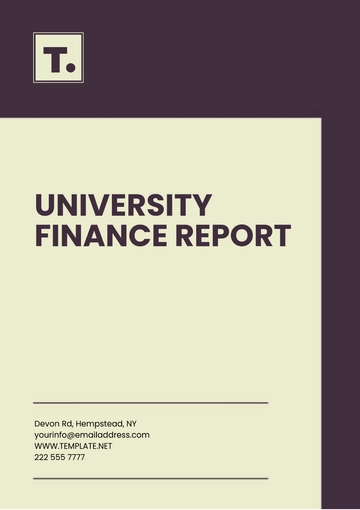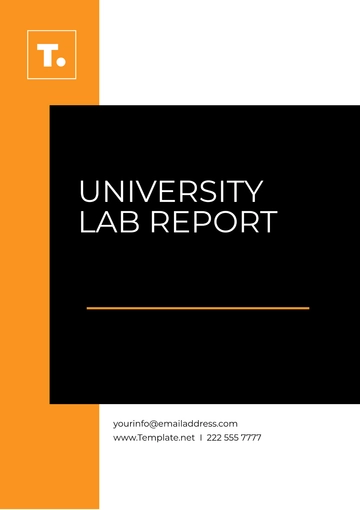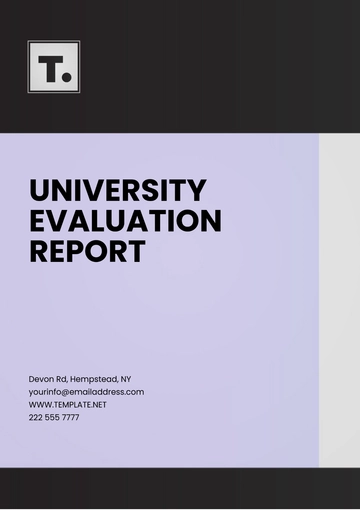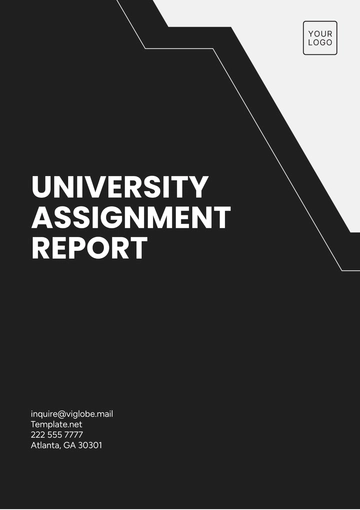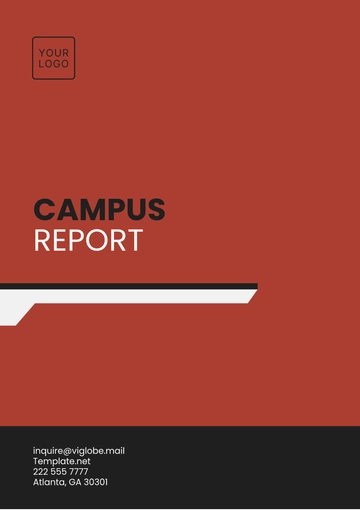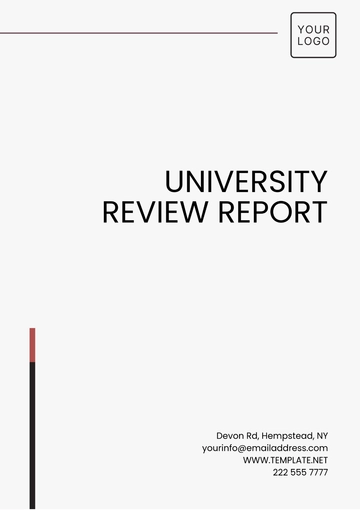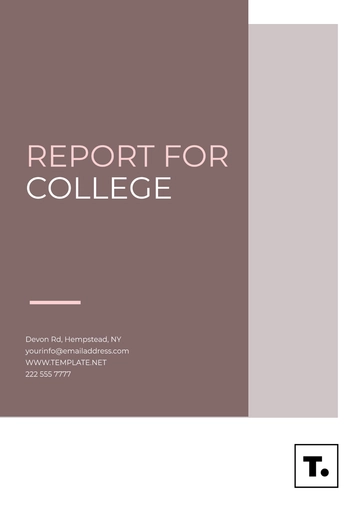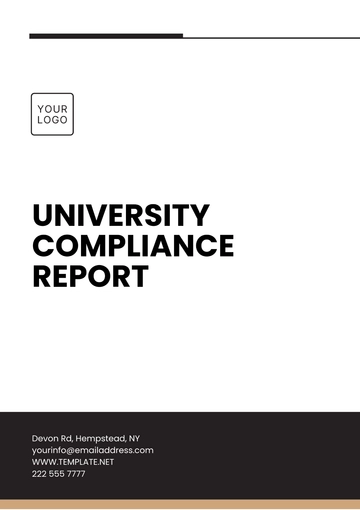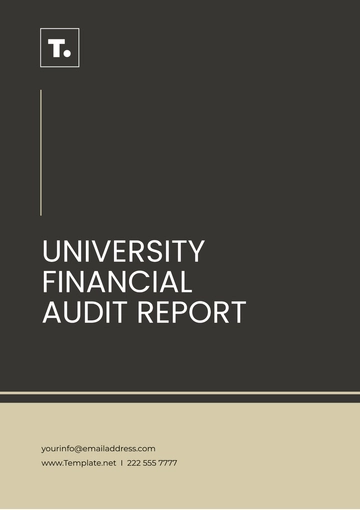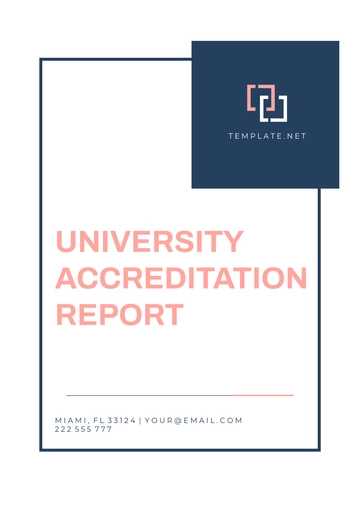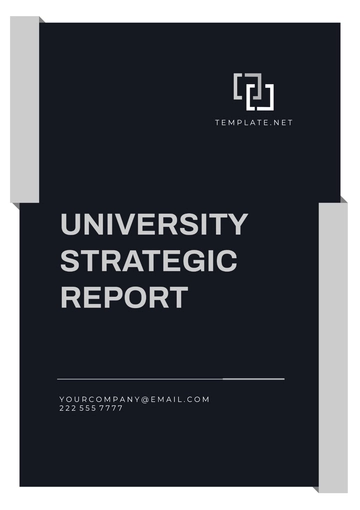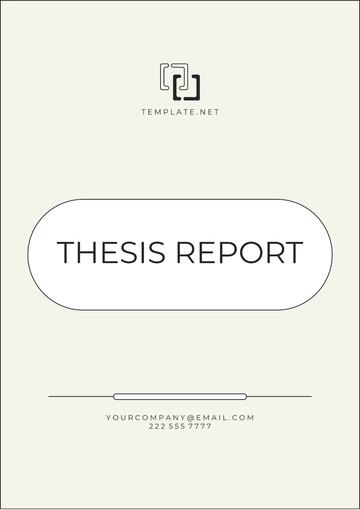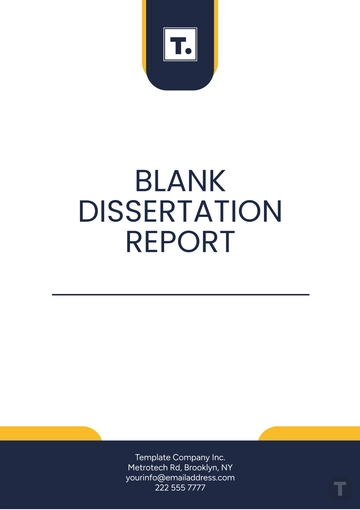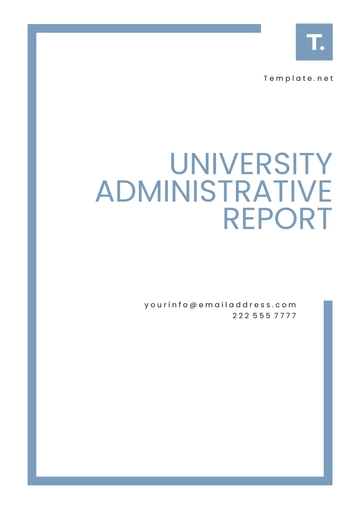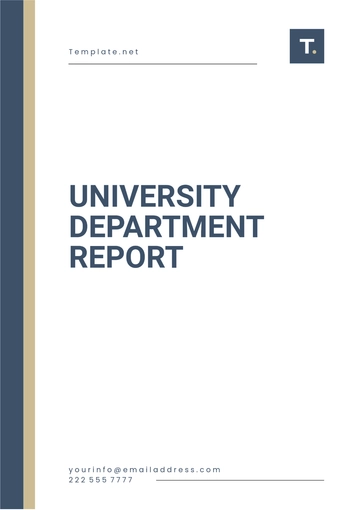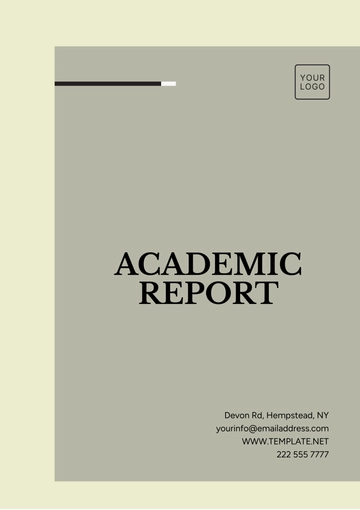Free University Compliance Report

Prepared by: [YOUR NAME]
Email: [YOUR EMAIL]
I. Introduction
In an ever-evolving regulatory landscape, maintaining compliance is essential for the integrity and sustainability of our university. This report aims to assess our current risk management practices and identify areas for improvement to ensure adherence to applicable laws and regulations. By fostering a culture of compliance, we enhance our reputation and safeguard the interests of our students, staff, and stakeholders.
II. Risk Management Overview
Effective risk management is crucial in identifying, assessing, and mitigating potential compliance risks that could adversely affect our university. This section provides a comprehensive overview of our current risk management strategies and their effectiveness.
Risk Management Strategies
Strategy | Description | Owner | Frequency | Next Review Date |
|---|---|---|---|---|
Risk Assessment | Regular evaluations of potential compliance risks | Compliance Officer | Quarterly | April 15, 2050 |
Training Programs | Staff training on compliance standards | HR Department | Biannually | May 1, 2050 |
Incident Reporting | System for reporting compliance issues | Compliance Officer | Continuous | Ongoing |
Internal Audits | Periodic audits to assess compliance adherence | Internal Audit Team | Annually | June 10, 2050 |
Policy Updates | Regular updates to compliance policies | Legal Counsel | As Needed | Ongoing |
III. Risk Assessment Findings
In our latest risk assessment conducted on January 10, 2050, several key areas were identified as requiring further attention. These areas have been categorized based on their potential impact on compliance.
Identified Risks
Risk | Impact Level | Likelihood | Mitigation Strategy | Responsible Party |
|---|---|---|---|---|
Data Privacy Breaches | High | Medium | Implement stricter access controls | IT Department |
Non-Compliance with Title IX | High | Low | Regular training sessions | Compliance Officer |
Financial Mismanagement | Medium | Medium | Quarterly financial reviews | Finance Department |
Safety Violations | Medium | High | Conduct safety audits | Safety Officer |
Environmental Non-Compliance | Low | Low | Sustainability initiatives | Facilities Management |
IV. Recommendations for Improvement
To enhance our compliance and risk management practices, the following recommendations are proposed:
Increase Frequency of Risk Assessments: Transition to monthly assessments to promptly identify emerging risks.
Enhance Training Programs: Develop tailored training sessions for specific departments to address unique compliance challenges.
Strengthen Incident Reporting Mechanism: Simplify the reporting process to encourage timely reporting of compliance issues.
Conduct Regular External Audits: Engage third-party auditors to provide an unbiased assessment of compliance practices.
Develop a Compliance Dashboard: Create a centralized platform for tracking compliance metrics and reporting.
V. Conclusion
In conclusion, this University Compliance Report highlights the importance of proactive risk management strategies in maintaining compliance and safeguarding our institution's integrity. By addressing identified risks and implementing the proposed recommendations, we can significantly enhance our compliance framework and foster a culture of accountability and transparency. Continuous improvement in our practices will not only protect our university but also ensure a safe and conducive learning environment for all.
- 100% Customizable, free editor
- Access 1 Million+ Templates, photo’s & graphics
- Download or share as a template
- Click and replace photos, graphics, text, backgrounds
- Resize, crop, AI write & more
- Access advanced editor
The University Compliance Report Template from Template.net offers a comprehensive solution for maintaining regulatory standards. This customizable and editable template simplifies report creation. Utilize our AI Editor Tool to tailor the document to your institution’s specific needs, enhancing accuracy and efficiency in compliance reporting. Perfect for administrators aiming for excellence in documentation.
You may also like
- Sales Report
- Daily Report
- Project Report
- Business Report
- Weekly Report
- Incident Report
- Annual Report
- Report Layout
- Report Design
- Progress Report
- Marketing Report
- Company Report
- Monthly Report
- Audit Report
- Status Report
- School Report
- Reports Hr
- Management Report
- Project Status Report
- Handover Report
- Health And Safety Report
- Restaurant Report
- Construction Report
- Research Report
- Evaluation Report
- Investigation Report
- Employee Report
- Advertising Report
- Weekly Status Report
- Project Management Report
- Finance Report
- Service Report
- Technical Report
- Meeting Report
- Quarterly Report
- Inspection Report
- Medical Report
- Test Report
- Summary Report
- Inventory Report
- Valuation Report
- Operations Report
- Payroll Report
- Training Report
- Job Report
- Case Report
- Performance Report
- Board Report
- Internal Audit Report
- Student Report
- Monthly Management Report
- Small Business Report
- Accident Report
- Call Center Report
- Activity Report
- IT and Software Report
- Internship Report
- Visit Report
- Product Report
- Book Report
- Property Report
- Recruitment Report
- University Report
- Event Report
- SEO Report
- Conference Report
- Narrative Report
- Nursing Home Report
- Preschool Report
- Call Report
- Customer Report
- Employee Incident Report
- Accomplishment Report
- Social Media Report
- Work From Home Report
- Security Report
- Damage Report
- Quality Report
- Internal Report
- Nurse Report
- Real Estate Report
- Hotel Report
- Equipment Report
- Credit Report
- Field Report
- Non Profit Report
- Maintenance Report
- News Report
- Survey Report
- Executive Report
- Law Firm Report
- Advertising Agency Report
- Interior Design Report
- Travel Agency Report
- Stock Report
- Salon Report
- Bug Report
- Workplace Report
- Action Report
- Investor Report
- Cleaning Services Report
- Consulting Report
- Freelancer Report
- Site Visit Report
- Trip Report
- Classroom Observation Report
- Vehicle Report
- Final Report
- Software Report
